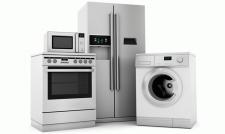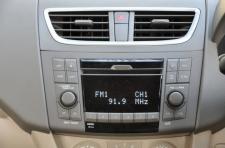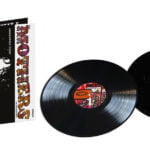It’s the time of year for saving money!
According to the latest statistics from Statista the worldwide CE industry generated 224 Billion dollars in sales in 2016. 224 Billion dollars. That’s a lot of money. But is the consumer electronics business all about audio? Obviously not, since it includes a lot of gadgets and devices that while electronic, are not primarily audio (but may offer audio as one of their features). The concept that there is one monolithic CE industry flies in the face of reality. CE is in actuality a whole bunch of smaller industries and markets that are all grouped together for statistics’ sake. Although there is overlapping between different product categories and customers, in reality the CE industry is not a mega-business where one size fits all. Let’s look at some of the micro and macro markets that make up the audio side of CE.
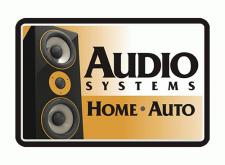 Old-School High-Performance Audio
Old-School High-Performance Audio
Dedicated rooms, triangulated set-ups, room treatments, LPs, tape recorders, cables, and of course reference-quality recordings are all part and parcel of the traditional high-performance (often referred to interchangeably as “high-end” audio). Distribution is primarily still through specialty stores although audio shows have also become an important showroom opportunity for many manufacturers. This is where I’ve been focused for many years.
New-School High-Performance Audio
This category overlaps “computer audio” which uses exclusively digital sources such as streaming, NAS drives, dedicated network devices, and software apps. Distribution is not only through specialty stores but also mass-market and “computer-tech” retailers. The demographics are younger than for “old-school” products and as you might expect, the prices are generally not as stratospheric.
Portable Audio
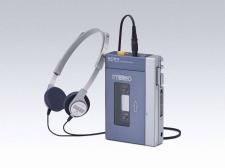 Sprung from the head of the first Sony Walkman, portable audio includes all portable music players, earphones, and accessories for players and earphones. This category also includes the ubiquitous smartphone. This particular segment of the business has exploded in recent years to the point it’s hard to find a retailer, regardless of their specialty, who doesn’t have some portable audio products on display, whether its $5.99 earbuds at the Dollar Store or $3199 players at your local high-end emporium.
Sprung from the head of the first Sony Walkman, portable audio includes all portable music players, earphones, and accessories for players and earphones. This category also includes the ubiquitous smartphone. This particular segment of the business has exploded in recent years to the point it’s hard to find a retailer, regardless of their specialty, who doesn’t have some portable audio products on display, whether its $5.99 earbuds at the Dollar Store or $3199 players at your local high-end emporium.
Personal Audio
This category has a lot of overlap with portable audio and for many products is virtually interchangeable. The difference is that this also includes headphones and headphone amplifiers that are not portable. Some products, such as high-priced headphones, will only be found in specialty shops or at audio shows, but others, such as in-ear headphones, can be found in a wide variety of retail establishments and on-line.
Desktop Audio
This includes any audio system set up for nearfield listening on a desktop or monitoring station. As with many categories there’s some similarities with personal audio, but it also includes smaller monitor loudspeakers, all-in-one audio systems, subwoofers, and, of course cables. Desktop audio can also include many of the same components found in the Prosumer category.
This category includes products used to produce music. It includes a good percentage of desktop products, but also includes smaller mixing desks, microphones, microphone preamplifiers, EQ boxes, signal modifiers, recording devices, and software suites.
Pro/Studio Audio
This is the prosumer gear on steroids – more flexibility, with more multi-channel options and signal chain modifiers. Also, generally, more upper-tier-priced gear. This category also includes sound reinforcement components including phase array speaker installations and on-stage monitors.
Lifestyle/Mid-Fi Audio
If it makes a sound that is any way similar to music and intelligible speech it can be lumped into the mid-fi/lifestyle category. Usually looks and features are more important than sonics. Streaming, however, has become an essential feature. When you combine the sonic capabilities of an old table radio with modern digital sources you get mid-fi.
Personal Assistant/AI Audio
“Alisha, where’d I put my socks?” and other vital questions answered is the big promise of an AI personal assistant. Combined with the data from your Rhumba cleaner, your AI knows the dimensions of your rooms better than you do. Yes, these devices will also play music, albeit bandwidth limited. This category merges nicely with the next one…
This pastime didn’t even exist when I was young. I remember being amazed when during a plane flight I discovered my seatmate was a professional gamer on a team that played internationally. She was also only 21. Finding a home in the US with only one gaming device is a challenge. And yes, some of the devices can play full-resolution music and stream from the Internet with aplomb.
Smart Home/Distributed Audio
Welcome to Control 4 territory. Having a networked home where every feature is available in every room doesn’t come cheap, but with wireless technologies it’s becoming something that in its simpler forms doesn’t need a boatful of money or a certified trunk-slammer to install. “How many rooms of Sonos do you want?”
Commercial Display Audio
Walk into any public space, such as an airport, and you’ll be exposed to the latest in commercial display audio. This category includes the multi-display video walls and the gear to keep those walls interesting. At its extreme edges, commercial audio merges with computer networks – it’s come a long way since the days of a VCR hooked up to a TV screen…
Dishwashers, refrigerators, microwaves, clothes dryers, toasters, and even hot water heaters come under the ubiquitous “white goods” category. Some of these appliances even play music – my washing machine favors Fleur-de-lis as its “I’m finished” serenade. More and more of the upper-tier white goods are also ready to connect to the Internet of things – some refrigerators will show you what’s inside via their networked connections and of course you can start the latest crock pots via an Internet remote even if you’re several hundred miles away from home.
If it rolls, whether on two, three, four, or more wheels, there’s a good chance that it will come loaded with a cornucopia of electronic devices to aid in parking, driving, finding directions, communication to the outside world, and of course, music. This market is so big (and lucrative) that some major manufacturers who began as purveyors of home audio nowadays make the majority of their incomes from automotive electronics.
There are several other categories of products that are also included in consumer electronics category, such as personal care devices (shavers, etc.,) home medical devices (STEM stimulators, heating pads,) and that all-encompassing miscellaneous category. Some of these play music, too.
To sum up – it’s a big world out there. Unfortunately for audiophiles, the kinds of products that appeal most to us are not the ones that are filling up the coffers of large manufacturers. This means the focus of most big-budget R&D is not further refinement of the audio signal chain, and most future sonic improvements by large firms may well be afterthoughts or improvements wrought for non-audiophile reasons. Audiophile considerations are not driving the technological boat anymore (it could be argued that audio quality have never been in the forefront of innovation except among those companies that specialized in high-performance audio) and audiophiles of the future may have to be content with “trickle-down” sonic improvements gleaned from more popular mainstream technologies…



